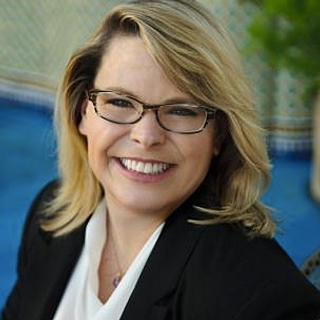What does Disability Mean?
- Deb Russell
- Jul 19, 2023
- 4 min read
July is Disability Pride Month. But what does that mean?
Is it about acceptance of people who have disabilities?
Is it about people accepting that they have disabilities?
Is it about increasing awareness of the reality of having a disability?
Is it about decreasing the stigma related to disability and people who have disabilities?
YES
It seems that one of the most baffling parts of the disability community is the lack of awareness of “WHAT” a disability is. And that is much of the confusion. Long ago, diversity was simple – you were a Woman or you were a Man. You were Caucasian or you were a person of Color. Do any of you remember long ago, when you had to complete a demographics questionnaire and had to choose, one or the other. As time went on, other qualifiers were added “Mixed Race”, “Hispanic or Other”, and then race, ethnicity and nationality started to become a list: Asian, Pacific Islander, Native American (Indigenous People). As time went on, we allowed people to choose to not select any particular label with intention “Other” or “Not Listed” and “Prefer not to Say”.
I have watched the LGBTQIA+ community to continue to expand their definition and attempt to be as inclusive as possible. They have also embraced gender identity and helped us with new vocabulary (Binary/Nonbinary) and pronouns “He/She/They” and titles “Ms./Mrs./Mr./Mx.”.
But within the disability community, we are still struggling. There is no biological or geographical basis for defining disability and whether a person has one. There isn’t even a medical definition. We are still immersed in the legal definition of “who counts” and “who is protected/eligible” and consistently looking to describe who is “in” and who is “out”. It doesn’t seem very inclusive. And, in my opinion, we spend way too much time, as a community, trying to figure out who should be part of our community.
Having the label of “disability” is important if one is concerned with eligibility of services related to that disability or describing discrimination protections. But in the rest of society, why do we care?
Very simply because disability is not about medical conditions, it is about a person’s interaction with their environment and equal access to opportunities. And that is where society at-large (those who do not identify as having disabilities) get very anxious.
Somehow, ensuring equal access seems to have taken on a connotation of privilege. From my perspective, ensuring one individual has access to opportunities deemed available to “all” becomes a fight, a jealousy, (or worse) a threat. Let’s take service animals as an example. Individuals who have significant barriers (like no sight), use service animals to compensate and permit them to navigate in our (those of us with sight) world. These animals help keep people safe and allow them to go to and from work with ease. Allow them to be able to travel and experience the world, etc. And for a while, this was deemed as “OK”, it made sense. You get on a plane, notice someone with a dog wearing a harness and observe something obvious about the person’s inability to see and it all makes sense. Then as time went by and it became accepted that people who are blind use planes for work and leisure, just like the rest of us. It was so accepted that we forgot to note the reason why they bring a dog on the plane is because without the dog, they could not navigate to and from the rest of their journey. Almost everyone loves dogs, even those of us who are allergic to them can see the appeal and how they benefit everyone’s life even if they don’t need them due to an impairment. And in that acceptance, somehow grew an envy. Others wanted their dogs to be able to travel with them in the same manner (in the cabin, next to or under their seat) versus being in the belly of the plane and in a container. And as we saw more people with dogs on a plane, more of us wanted our dogs to go on the plane with us. It was seen as an advantage to bring your fur family member on vacation or to work. And then, the airlines found that many passengers (and employees) did not want this close of a presence with animals who may or may not be trained (remember, to qualify as a service animal, a dog must be highly trained). And so, we had to right regulations as to WHICH dogs were allowed on a plane and in what way. And somehow, equal access which should be a simple right for those who have a disability that prevents equal access, became a privilege in many people’s opinions.
There are thousands of examples like this. Where a need somehow evolves into a privilege in others’ eyes. And I think that the reason this happens is because disability is not an easily observed differentiator. Three quarters of disabilities are “non apparent”, which means that most of us would not know that the person has a disability. In this case, individuals who have an invisible disability are deemed as non-disabled, and that makes our ability to access equal opportunities challenging.
So, focusing on “what” a disability is, takes us away from understanding that the important context is related to the meaning of a disability in each person’s life. But for those who do not identify as having a disability, we must start with “WHAT” before we can understand meaning. If you struggle in understanding what a disability is, take this quick video quiz. It will help you move on to a deeper understanding of not just what a disability is, but the impact of having a disability.
Happy Disability Pride Month!!


Comments